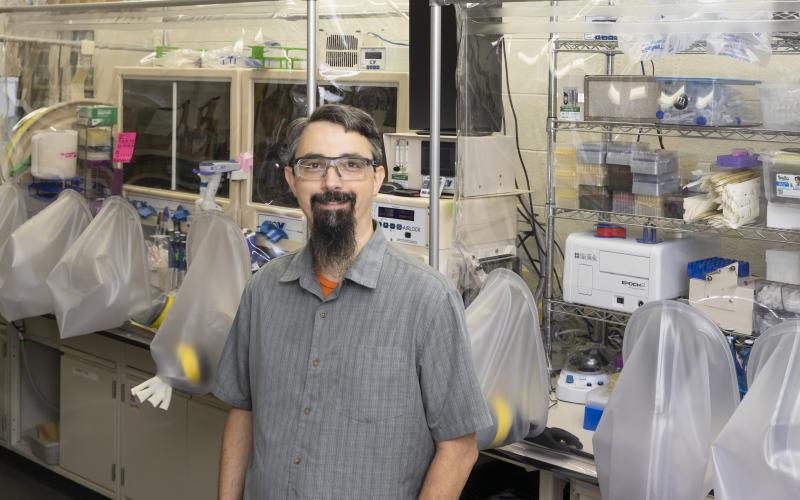
By Abby Bower
As a metabolic engineer at Oak Ridge National Laboratory, Adam Guss modifies microbes to perform the diverse processes needed to make sustainable biofuels and bioproducts.
Whether he’s designing a microorganism to eat plastics or convert bioenergy crops like switchgrass and poplar into renewable fuels, Guss starts outside the lineup of usual microbial suspects, which includes E. coli and yeast. By focusing instead on less-studied organisms, called non-model microbes, Guss opens the door to harnessing their unique capabilities.
“The vast majority of metabolic engineering is done in a very small number of organisms because it’s easy to grow them and modify their DNA,” Guss said. “The problem is that some characteristics are really hard to engineer into an organism. If you want a microbe that can withstand high temperatures or consume plant material, for instance, it’s easier to start with an organism that’s already good at those things.”
This approach has proved successful for Guss, who leads research to identify and engineer non-model microbes as part of several multi-organization initiatives supported by the Department of Energy’s Bioenergy Technologies Office. Under the Agile BioFoundry, he leads a team that studies new non-model microbes and develops an array of technologies and methods for accessing and editing their genes. These genetic tools help shorten the typically long time it takes to make wild microbes useful for industry.
Read the full feature on Oak Ridge National Laboratory’s website.